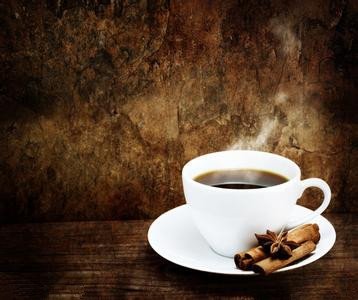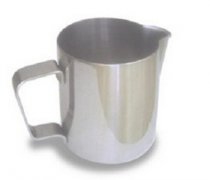Espresso (espresso) is the essence of coffee.

The charming fragrance of a cup of hot, smoking coffee just brewed from freshly roasted beans can pull sleeping people out of bed and lead passers-by into the cafe. Millions of people around the world would have trouble getting through the day without a bout of sanity caused by the caffeine in their coffee. Only in this seemingly ordinary drink, but there is a very complex chemistry. Various ways from the production and roasting of coffee beans to the preparation of coffee have a subtle impact on hundreds of chemicals and define the taste, aroma and texture of coffee. If there is no in-depth understanding of the above, it will be a rare opportunity and pure luck to have a good cup of coffee.
Connoisseurs agree that espresso (espresso) is the essence of coffee: a small, strong magnetic cup filled with a half-full dark, opaque drip filtrate with a mellow, reddish-brown foam called crema. Klima is composed of fine bubbles wrapped in thin film, which is closely related to the unique taste and flavor of coffee, as well as its heat. The word Espresso is meant to be made upon request. As for the practice is to grind the roasted coffee into fine grains, press it into a cake, and filter it quickly with a small amount of pressurized and heated water. The resulting concentrated liquid contains not only melted solids, but also a large number of various spice substances in the scattered tiny oil droplets suspension. All these add up to the unique strong taste, smell and "taste" of espresso.
Addicts believe that the perfect espresso is the best because of its special preparation method, which shows and strengthens the natural characteristics of coffee beans. In fact, espresso is the essence of all kinds of coffee-making methods, from the Turkish method to various leaching methods to filtering leaks (see the introduction of other coffee-making methods in the text box on the page); as long as you know the practice of espresso, you know all the forms of coffee making, so it is more appropriate to take it as an example.
High-quality coffee comes from maintaining tight control over a variety of factors, from soil to plants to cups. There are countless variables in the cultivation of coffee that must be paid attention to and control. once the coffee beans bear fruit, the quality has been determined, and nothing can be added or removed. For an espresso, it takes 50 to 55 beans; one imperfect bean is enough to cause pollution. That's because the human sense of smell and taste begins with a self-defense mechanism to protect our ancestors from decay, that is, unhealthy food. Only by relying on modern technology can it be economical and stable to identify 50 perfect coffee beans.
Grow coffee
Raw coffee beans are the seeds of Rubiaceae, and there are at least 66 species in the genus Coffea. Two of the commercial interests are Arabica (Coffea arabica) and Congolese coffee (C. canephora). The former accounts for 2/3 of the world's production, while the latter, also known as Robusta, accounts for the remaining 1/3. Robastian coffee and all wild coffee have 22 chromosomes, while Arabica coffee has 44. As a result, Arabica coffee cannot be bred with other kinds of coffee to produce hybrid plants.
Robasta coffee is a high-yielding and pest-resistant plant that can reach a height of up to 12 meters and grows best in warm and humid climates. Coffee made from robastian beans is quite substantial, relatively strong, has a local flavor, and is high in caffeine, accounting for 2.4% to 2.8% of the weight. Although many suppliers sell robastian coffee, this kind of coffee beans fail to produce the highest quality coffee.
Arabica coffee, which originated in the highlands of Ethiopia, is a delicate plant with medium to low yields, with a height of about 5 to 6 meters, but coffee trees cultivated for commercial purposes are all pruned at 1.5 to 2 meters high. They need a temperate climate and considerable care during their growth. Coffee made from Arabica beans has a strong, complex smell reminiscent of flowers, fruit, honey, chocolate, caramel or toast; its caffeine content never exceeds 1.5% of the weight. Because of the excellent quality and taste of Arabica coffee, the price is higher than its strong, coarse cousin.
A good rain will cause Arabica coffee trees to blossom. After 210 days, red or yellow berries appeared. There are two rectangular seeds in each berry, namely coffee beans. Because there are both flowers and fruits on the same branch, the index finger and thumb of the collector are the best tools for collecting ripe berries. Grabbing the fruit from the whole branch with the palm of your hand, or using an automatic harvesting machine, you can't tell the ripe berries from the green berries.
The factors that determine the final quality of coffee beans depend on the plant's genes, the soil in which they grow and the climate of the local area, including horizontal height, Rain Water and sunlight, as well as daily temperature changes. These agricultural and geological considerations cause differences in the taste of many different coffee beans in the process of roasting; suppliers mix them to create a variety of special mixed products on the market.
Processing coffee
Coffee beans must be disposed of immediately after harvest so as not to go bad. The producer will use two methods of treatment: the sun method and the cleaning method. An effective way to bask in the sun is to spread the berries flat in the yard and stir the dehydrated berries from time to time to make them evenly heated and breathable. Then put the dried berries into the machine, crush the shell, and remove the shell and a parchment film at the same time, separate the coffee beans, and then sort and bag them. In another way, the berries are mechanically removed, washed, dried and separated from the sheepskin-like outer membrane. Either way, the first goal is to reduce 65% moisture in coffee berries to only 10-12% raw (green) coffee beans.
One of the biggest challenges to making good coffee is to make sure to start with good raw coffee beans. Top manufacturers, such as Yili Coffee in Trieste, Italy, use many complex labor management techniques to reduce the proportion of defective coffee beans. These include the use of ultraviolet fluorescence analysis to pick out moldy beans and the use of tricolor images (yellow-green, red and infrared) to establish color fingerprints for each batch of beans. The Italian Coffee Company has partnered with the British company Sotex to develop a two-color light classification system to do the final quality control before raw coffee beans are roasted. The way is that the photodetector picks out the bad beans from the beans that fall on the plate, and then removes them separately with a blow from the air nozzle. This classification operates at a speed of up to 400 beans per second, which is not comparable to that of any man, and its accuracy is not as accurate as that of the most trained human eyes.
A perfectly mature raw coffee bean, made up of unusually thick-walled cells, can be as thick as 5-7 microns, which is rare in the plant world. During baking, these cells with a diameter of 30 to 40 microns act like microreactors, where all the important chemical reactions driven by heating take place, resulting in the fascinating taste and aroma of coffee. On the one hand, the cell wall of immature coffee beans is thin, and there is no important flavor protein precursor produced in the final stage of ripening. These important substances in the cells are also emptied from beans fermented by bacteria or mold.
Important Notice :
前街咖啡 FrontStreet Coffee has moved to new addredd:
FrontStreet Coffee Address: 315,Donghua East Road,GuangZhou
Tel:020 38364473
- Prev

Foam Guide have you ever had such a cappuccino?
Have you ever had such a cappuccino? It looks like a cup of art and tastes like silk. If you've ever had a cappuccino like this, I think it's probably hard for you to drink that bubbly, fluffy cappuccino. So what makes a real cappuccino so delicious? Of course it's the skill of a barista. The skill of milking is not so tolerant.
- Next

When can the coffee be picked? When is the opening date for coffee?
Coffee trees usually blossom in 3-4 years, about 2-3 months a year, and their appearance and smell are similar to those of jasmine. when they bloom, they grow in clusters on the branches and bloom for 3-5 days. After the flowers bloom, they bear small green fruits, which ripen and turn red into ripe fruits that can be picked after a few months. The skin of ripe fruit is red. Because its shape and color are similar to cherries, ripe coffee fruit is called coffee cherry in many places.
Related
- Beginners will see the "Coffee pull flower" guide!
- What is the difference between ice blog purified milk and ordinary milk coffee?
- Why is the Philippines the largest producer of crops in Liberia?
- For coffee extraction, should the fine powder be retained?
- How does extracted espresso fill pressed powder? How much strength does it take to press the powder?
- How to make jasmine cold extract coffee? Is the jasmine + latte good?
- Will this little toy really make the coffee taste better? How does Lily Drip affect coffee extraction?
- Will the action of slapping the filter cup also affect coffee extraction?
- What's the difference between powder-to-water ratio and powder-to-liquid ratio?
- What is the Ethiopian local species? What does it have to do with Heirloom native species?

